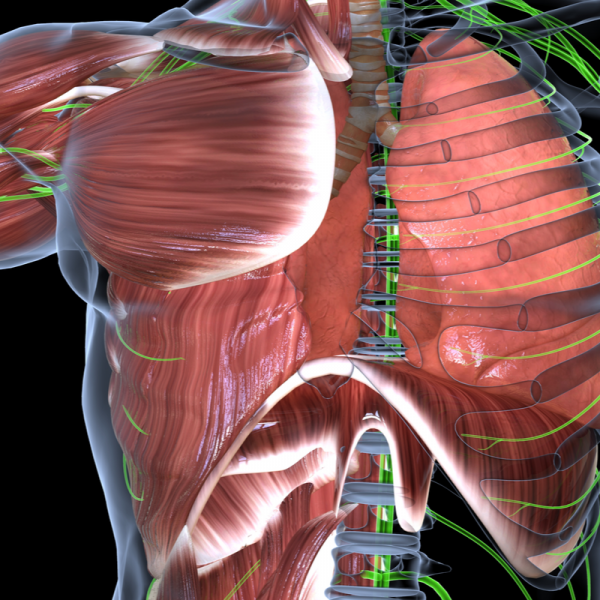
What is a bronchogenic cyst?
Bronchogenic cysts are closed tissue cavities which occur rather rarely and affect the bronchogenic tissue. This is the foregut, i.e. the mouth-side section of the intestinal tube, which is created during embryonic development (4th to 6th foetal week). However, bronchogenic cysts can also form in the mediastinum, the middle pleural space. This is the tissue space within the chest cavity that extends from the diaphragm to the neck area.
How does a bronchogenic cyst develop?
During the various embryonic developments, a preliminary intestinal tube is formed, a section of which is called the "foregut". This gives rise to the larynx, pharynx, oesophagus as well as the stomach and the first part of the duodenum. But also the windpipe and the lungs grow out of the sprouts of the foregut. Should this take an abnormal course, a cyst can grow in the front part of the foregut, which is called a bronchogenic cyst.
What are the symptoms of a bronchogenic cyst?
Two thirds of all patients who have a bronchogenic cyst start to develop symptoms in infancy. These can vary greatly depending on the size and location of the cyst. However, the more or less unspecific symptoms such as a loud inhalation sound (stridor), coughing as well as shortness of breath and inflammation of the airways (pneumonia or recurrent bronchitis) are among the signs of a bronchogenic cyst. In some cases, the bronchogenic cyst can already be diagnosed before birth. This is possible, for example, if a cystic structure in the mediastinum can be identified on ultrasound.
How is a bronchogenic cyst diagnosed?
A bronchogenic cyst can be diagnosed as a cystic structure in the mediastinum on ultrasound before birth. After birth, the bronchogenic cyst can also be visualised as an X-ray. It appears as a dense, roundish structure, which looks like a mucus-filled structure in a computer or magnetic resonance tomogram of the chest. It is also possible that the bronchogenic cyst is discovered by chance during another examination.
How is a bronchogenic cyst treated?
Since bronchogenic cysts carry the risk of infection or malignant degeneration of the cyst wall, they must be removed. This applies even if the bronchogenic cyst does not cause any symptoms. If the cyst is located inside the lung (intrapulmonary), it must be removed while sparing the surrounding lung tissue. In this case, it is only necessary in extremely rare cases to also surgically remove the affected lobe of the lung (lobectomy).
Frequencies Bronchogenic cyst
|
Pathogenic |
Source |
Frequencies |
|
Bronchogenic cyst |
EDTFL |
Members get access to the frequencies immediately after registration. |
